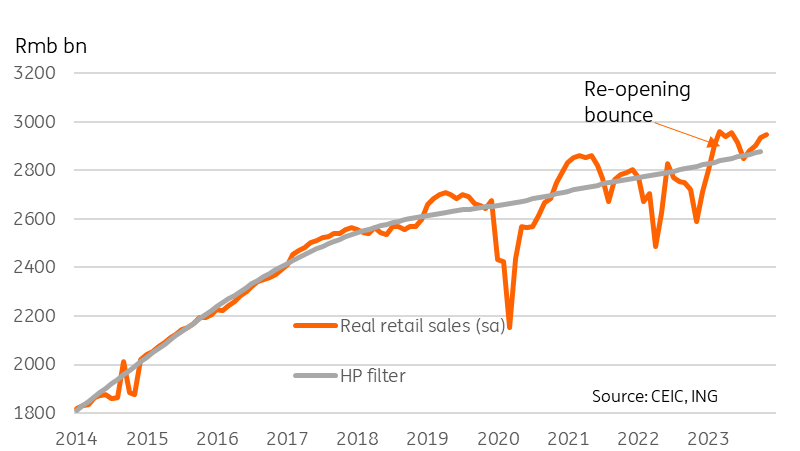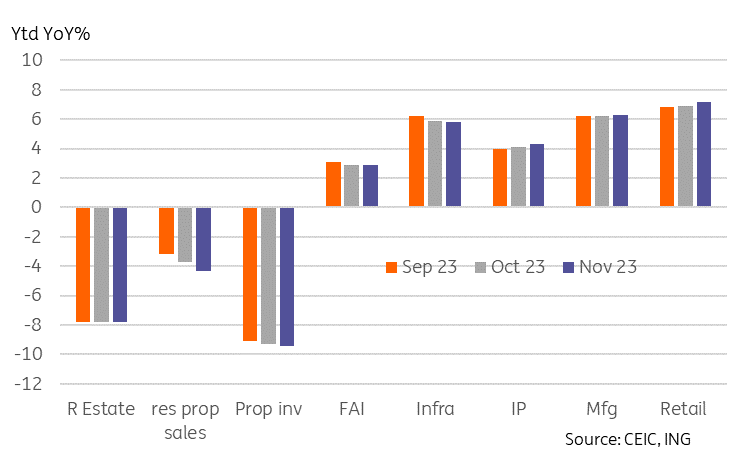China’s Sputtering Recovery Continues
Promising start from the PBoC
The day of China's monthly data deluge got off to a good start as although the People's Bank of China (PBoC) chose to leave the 1Y medium-term lending facility rate (1Y MLF) unchanged, they unleashed another sizeable increase in the volumes lent out at this rate. A further CNY1.45tr was lent out to financial institutions, well in excess of what was needed to roll over existing loans, helping boost market liquidity. This should help support activity in the coming months. Newswires also happily announced that new home prices fell by less in November than in the previous month. But with a -0.37% MoM decline in November versus the October -0.38% MoM decline, this is surely applying too literal an interpretation of what is still a fairly dismal outcome.
Real retail sales
Seasonally adjusted
(Click on image to enlarge)

Retail sales still the main engine of growth
The rest of the data releases followed the recent pattern where anything vaguely related to real estate (property investment, real estate sales, fixed asset investment) went backwards, while other activity metrics (industrial and manufacturing production and retail sales) made small gains.
China was still implementing lockdowns in November last year, and many of these data releases benefit from very weak comparisons in 2022. Consequently, we are treating all these numbers with caution and being careful not to leap to conclusions.
The retail sales number, which we are able to break down to an underlying index and seasonally adjust in real terms, does show continued support, but its rate of increase is slowing, and it is also flattered by the weak CPI reading for November. It doesn't look quite so good in nominal terms.
Activity summary
(Click on image to enlarge)

Recovery - narrow and vulnerable but ongoing
Our cautious conclusion from all of this is that China's recovery is ongoing. But it still looks narrowly based and vulnerable to any further worsening in the real estate sector. Further recent policy changes to support the real estate market in key cities look like more of the same supply-side measures that have not yet, and probably never will lead to the sort of short-term fix that many are hoping for, though they should provide a more solid framework for recovery when demand returns.
More By This Author:
Key Events In EMEA For The Rest Of 2023
The Commodities Feed: Positive Sentiment Continues
FX Daily: European Pushback Supports Local Currencies
Disclaimer: This publication has been prepared by the Economic and Financial Analysis Division of ING Bank N.V. (“ING”) solely for information purposes without regard to any ...
more


